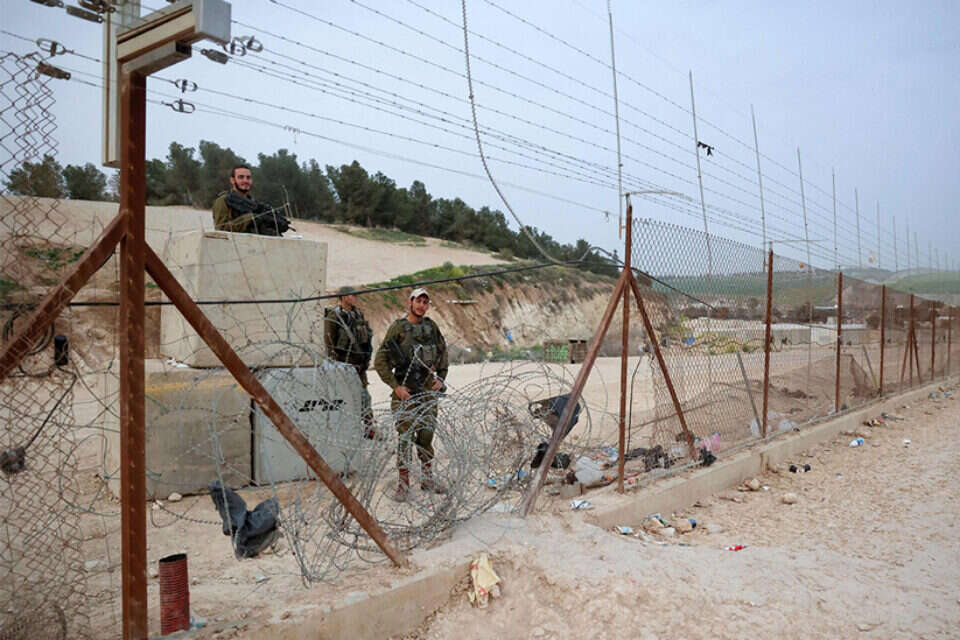Construction of the fence along the Green Line began in 2002 following the second intifada.
The goal was of paramount importance: preventing the infiltration of Palestinian terrorists into Israeli territory, and stopping the series of murderous suicide bombings that swept Israel at the turn of the millennium.
But even though 20 years have passed since the works began, the completion of the construction of the fence is not in sight.
The data show that out of the 600 kilometers of the seam space, a wall is currently built only 134 km long (less than a third of the section). Nothing.
Geographically, from the area of Tirat Zvi to the Citadel of Judah, there is a continuous fence or wall;
And in two main areas - in Gush Etzion and from the citadel of Judah to the Dead Sea - there is one large and long gap.
93 passages are located along the area, including agricultural gates.
If the Israeli government had invested the necessary attention and resources, the construction of the space would probably have been completed many years ago.
But the governments of Israel for generations have chosen to turn a blind eye to the problem, and have not approved the continuation of construction in the remaining sections.
The reasons for this are many and varied, but it seems that the lack of public interest in the seam space, given the number of terrorist attacks that has decreased since then, was the main reason.
A wall along the seam line, Photo: Dudi Vaknin
Of course, budgetary considerations, environmental considerations, and even political motives must be added to this - and there were those who argued that the construction of the fence was like an undesirable border marking between the Palestinian Authority and Israel.
The Israeli contractors and employers, who longed for the cheap labor force in the form of the Shabachs (illegal residents), were also a consideration for the government to turn a blind eye.
priorities
The fence that was built 20 years ago is inductive, but it is very easy to break through.
For comparison, an "hourglass" fence built along the Egyptian or Gaza border is very massive, built of other materials and based on a different concept, which makes it very difficult to cross.
And if the inefficiency of the fence itself is not enough, in recent years the IDF has consciously chosen not to invest forces along the seam area, due to priorities it has set for itself. Were popped into place in favor of thwarting the crossing.
Given this situation on the ground, the Ministry of Defense did not even try to invest in repairing those loopholes, as it was clear that as long as there were no forces to jump into the area during intrusion, it was simply a waste of unnecessary money.
And so the fence, in sections where there is no wall, became blatantly irrelevant.
Soldiers near the fence, Photo: AFP
Following the wave of terrorist attacks in the past two months, Israel has decided to launch a series of actions to combat the phenomenon and try to correct years of neglect.
In the first phase, the defense establishment decided to almost double the order of forces in Judea and Samaria, and to send many forces to defend the seam area in order to close the loopholes.
At the same time, the Borders and Seams Administration, headed by Brigadier General Eran Ofir, carried out quite a few actions designed to provide an initial solution to the problem. The number of radars along the space.
As a result of these and other actions, the phenomenon of infiltrations through loopholes in the fence has been greatly reduced in recent weeks, and the number of GSS has dropped from about 40,000 to a few hundred. To its precedence easily - since it will be possible to re-create gaps in the fence and the new obstacles.
More serious threats
In a recent discussion with Defense Minister Bnei Gantz, a budget of NIS 360 million was approved for the construction of a wall along part of the seam area, on the assumption that a wall cannot be easily breached.
The Borders and Seam Administration, headed by Brigadier General Ofir, is expected to begin construction as early as next month, and to build another 45 km of wall from the Salem area to Bat Hefer.
By the end of the works, there will already be about 180 km of built-up wall along the seam space - that is, about a third of the length of the entire seam space.
In any case, the problem is still far from solved, because in order to complete construction along the entire seam space, and create a real border that can not be crossed, an investment of about 3 to 4 billion shekels is required (some claim that the required amount is lower, but in any case billions Shekels).
The defense establishment, for its part, is not expected to invest the necessary budget because its budget is limited, and despite the threat of suicide bombers penetrating the seam area - there are much more serious threats, most notably the threat from Lebanon that requires building a formidable barrier in the north.
Were we wrong?
Fixed!
If you found an error in the article, we'll be happy for you to share it with us

